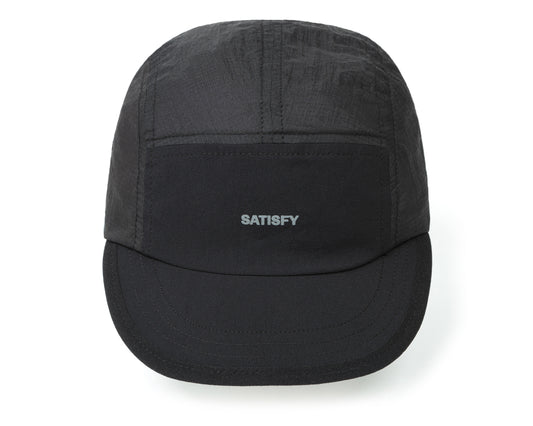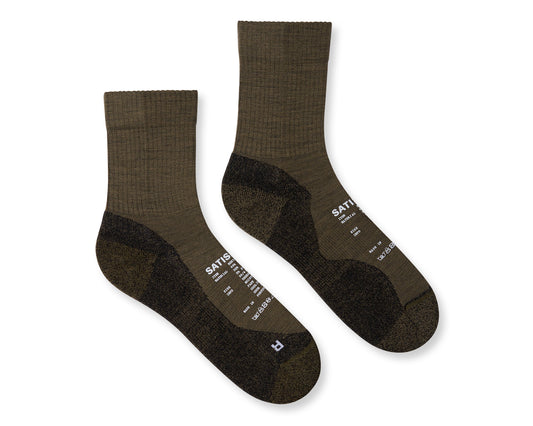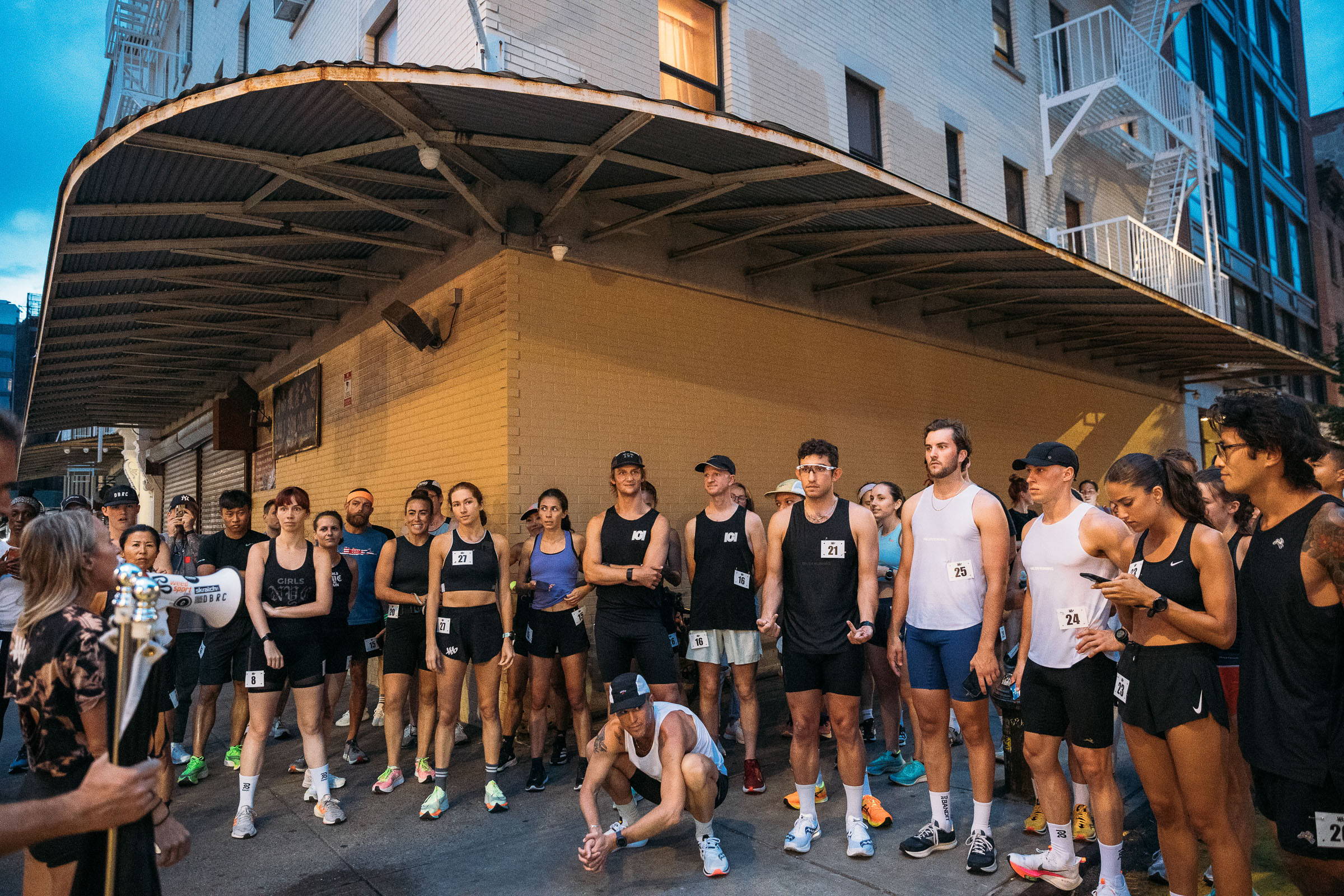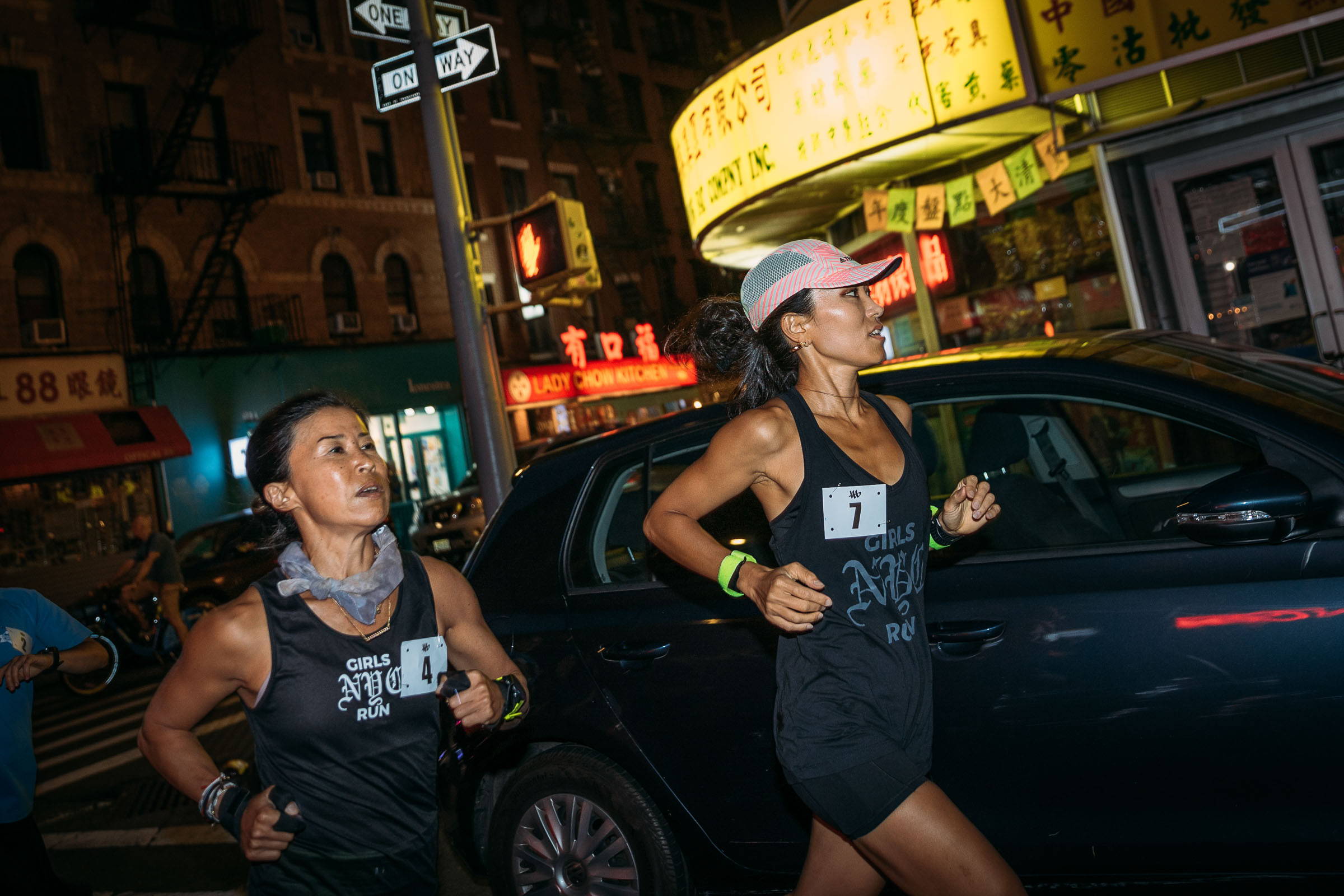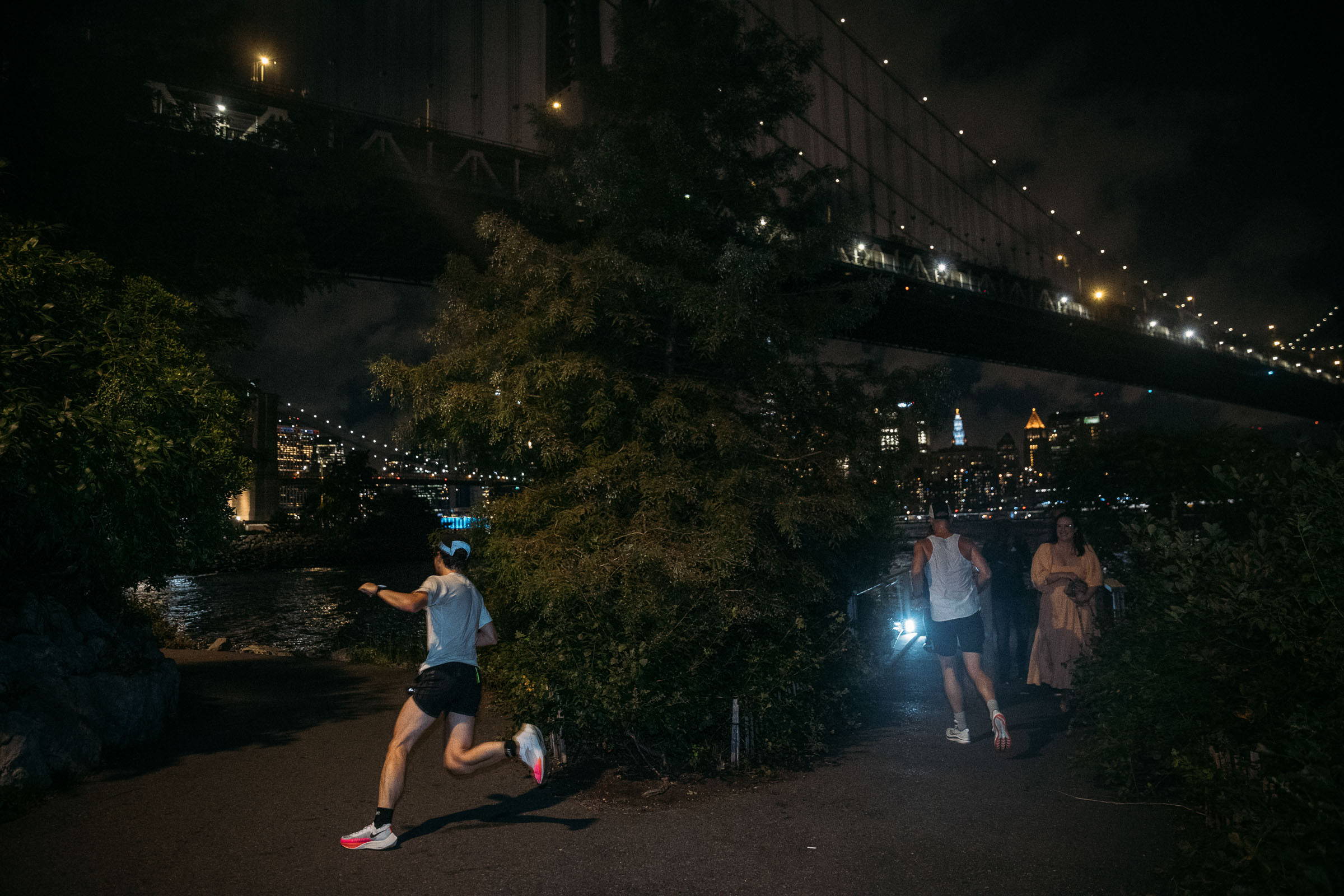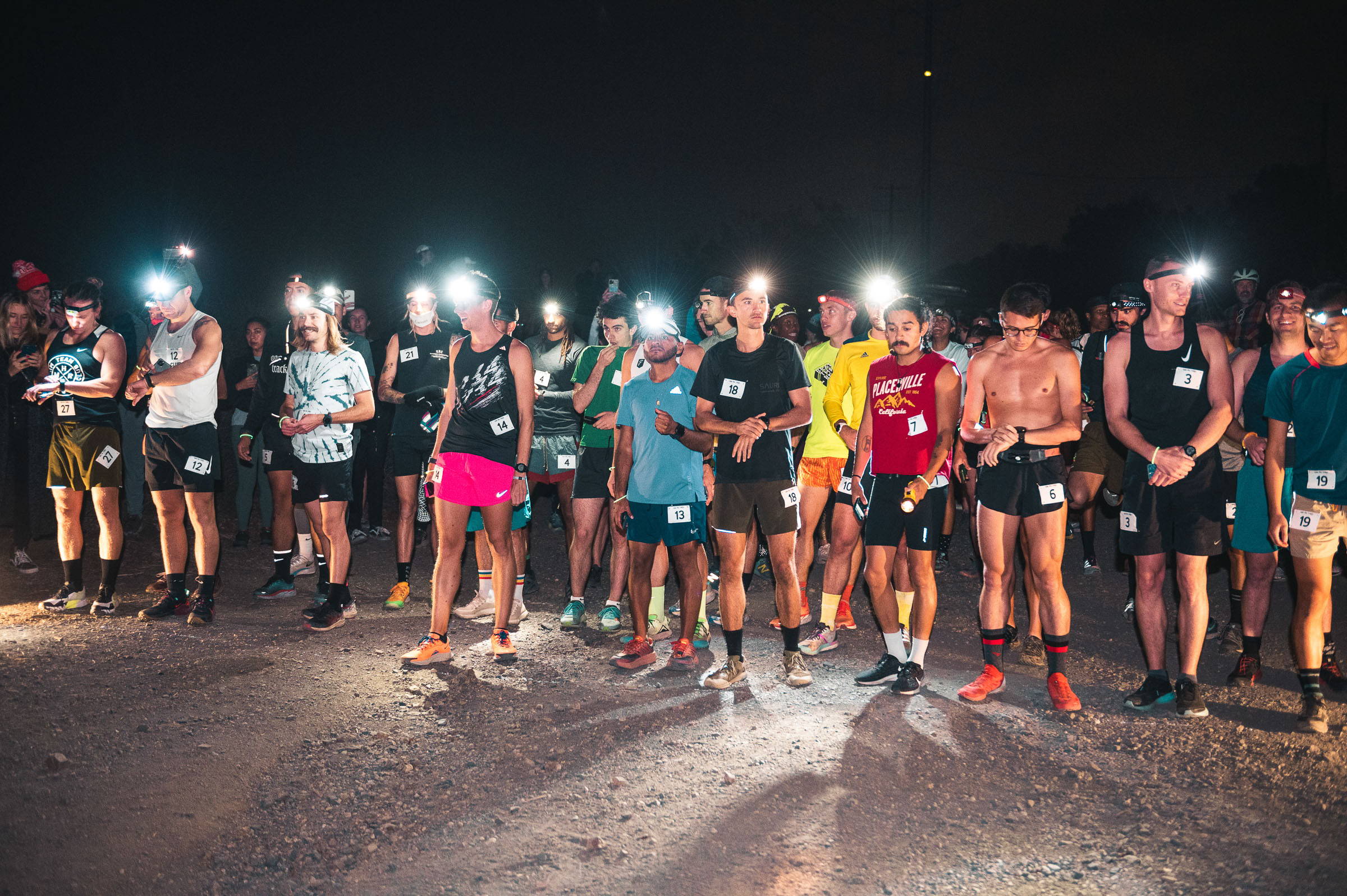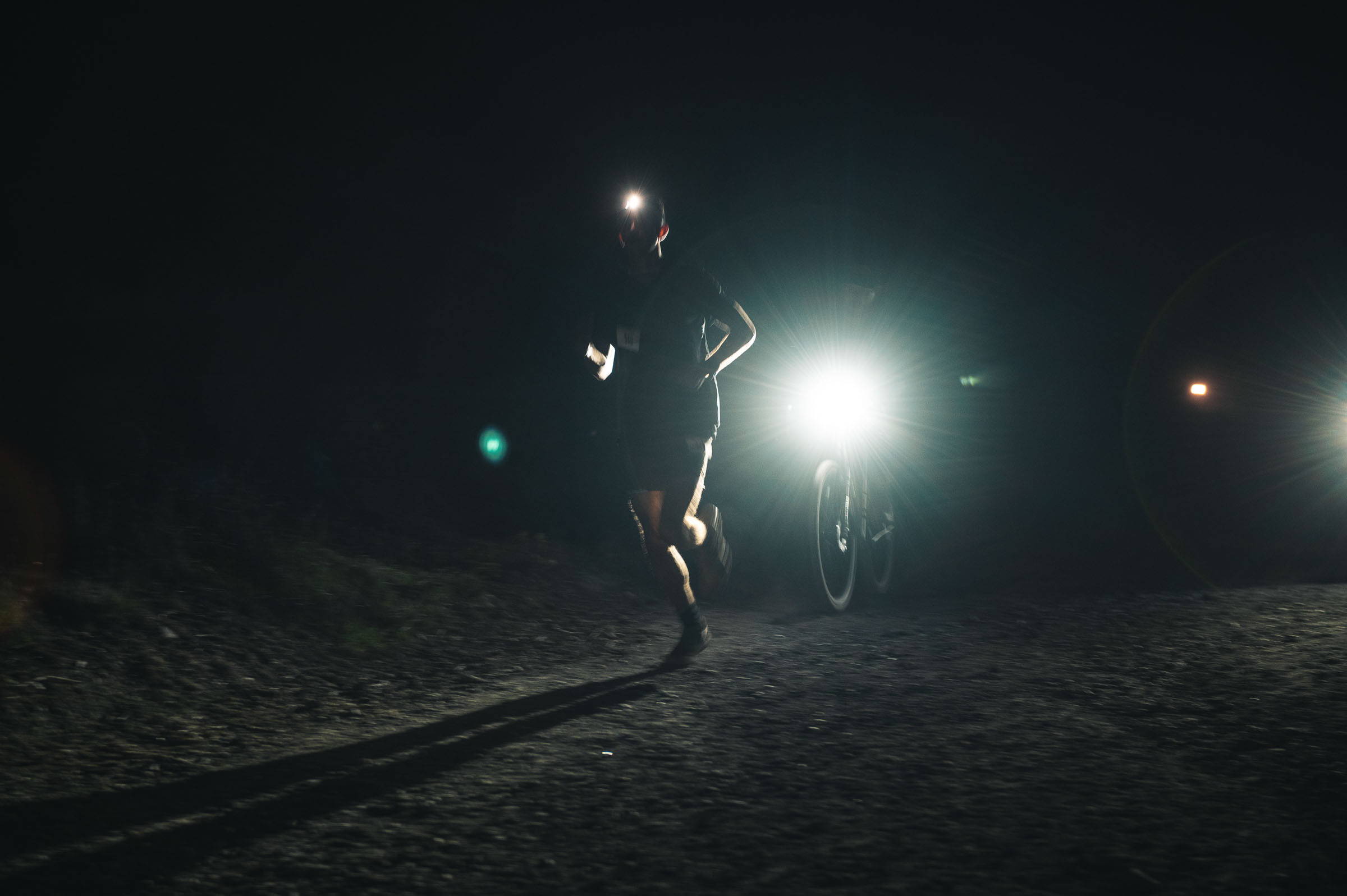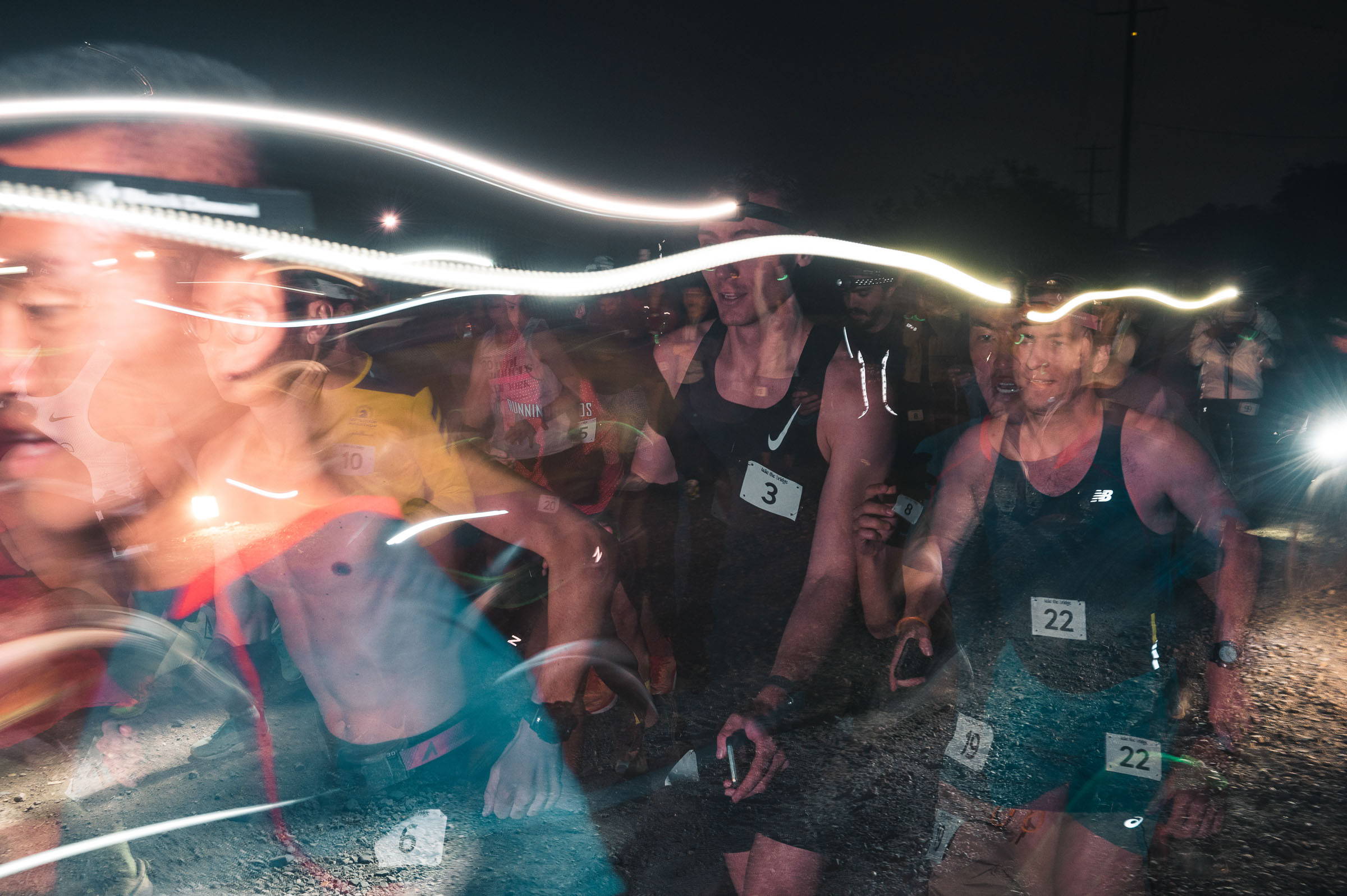
One of the best things about making POSSESSED magazine is meeting new people in the running community, and one of my favourite people so far is Darcy Budworth. This woman is a powerhouse. She founded the wildly successful global race series Take The Bridge, she has a full-time job as an interior designer, she has a dog, she keeps all her houseplants alive, and, according to Strava, she runs somewhere between 40 and 65km a week (plus 75km on the bike). How she’s doing all this and still making time to jump on the phone with me for an hour is anyone’s guess. But she did take the call, and we chatted about her very first run, and how she got started with the first of many super-fun, unsanctioned races.
NYC Summer 2022 photos by Kristina Williamson
LA Trail 2021 photos by Michael Rodmaker
Okay, Darcy, this is the ‘Firsts’ issue, so when was your first run?
Like, the first time I ever ran?
Yeah.
Oh, gosh, um...
Not including running around as a child.
Well, my mom was a speed walker, and as a child I’d have to run to keep up with her when she was speed walking because she was so fucking fast.
Your mom was a speed walker?
Yeah, she was a competitive speed walker. She was part of this team and they did all these speed walking relays. There’s actually this speed walking portion of Hood to Coast that’s called Portland to Coast, and they used to win it every year.
No shit?
Yeah. There’s a few of these races. There’s one out by Mount Rainier... I grew up in Portland, Oregon, and there were all these Pacific Northwest races they’d do and they would win, and they were all, like, moms and dads. I don’t think they ever travelled or anything like that because they all had day jobs, but they were very fast speed walkers and they won all these competitions.

'...my mom was a speed walker, and as a child I’d have to run to keep up with her when she was speed walking because she was so fucking fast.'
With speed walking, you have to constantly be in contact with the ground, right? That’s the rules.
Yeah, and there’s all these other rules, like, you have to hit the ground with your heel at specific times—
Right, right.
It’s a very interesting sport. Anyway, I grew up with that.
I wonder if speed walking will ever have a big comeback and I’ll end up working for a speed walking apparel company... That’d be pretty weird.
That would be an interesting turn of events. Do you know about ‘hot mom walks’ and ‘hot girl walks’?
No, what’s that?
It might just be an LA thing... It’s when you dress up and looking fucking cute on a walk.
[laughter]
It’s very interesting that you’ve got a background in foot races.
Yeah, my mother was very competitive, but in a slightly different realm.
'...at the same time, crews are starting to pop up, and a different type of running group was starting to form. So, it was just this idea of us taking responsibility for what was happening in the running community.'
So, when did you first start running?
I didn’t start running until I moved to New York for art school. Back then, my roommate used to run all the time and I thought she was fucking crazy. We lived in Clinton Hill, and it was about a mile to get to the Brooklyn Bridge, and she would run over it and then run back. And at first, I thought she was crazy, but then I thought maybe I’ll try that.
And did you?
Yeah, and when I got to the Brooklyn Bridge, I was like, ‘Fuck that. I’m not running over this bridge.’ And I walked home. So, I ran about a mile.
[laughter]
Wait, why wouldn’t you run over the bridge?
Because I was exhausted!
Oh! How long was it before it clicked and you thought, ‘I really like this’?
Well, I dated this guy who was the head of Nike Run; he was the person that spent all the money on running activation in New York at the time. He would give me all this free running gear, and I would tell him, ‘I’m not into running. I’m not a runner.’ Every once in a while, though, he would get me to run a couple of miles with him, and we did this one run that was three or four miles, and for the whole run he was like, ‘You really aren’t a runner, are you.’ And this was shortly before we broke up, and I think him telling me I wasn’t a runner became one of those things of, ‘I’m gonna prove that I am a runner and I’m gonna make him wish he’d never broke up with me.’ And that’s how I became a runner.
[laughter]
How did you start Take The Bridge?
Well, after I broke up with that guy, it was like, who do I run with? So, I did a search in The New York Road Runners. They organize all the races in New York, and they have a database of all the different clubs. So, I went through all these different run clubs, and one of them was like, ‘We run, we drink, we have a good time!’ They were called The New York Harriers, so I joined them and I ran with them for about six years, and the last few years that I ran with them, I was made president of the team.
Awesome!
Yeah, and this is a very Type-A team, you know? Very regimented. So, this is the first six years of me running and getting into it, and during that time I participated in all the New York Road Runner races, and I don’t know what they’re like now, but back in the day all they were was laps around Central Park. Like, 90 percent of their races went around Central Park, and to be honest, after a little while, it was getting really boring, like, can we do a different route? And because I was the president of the Harriers, I had to throw this 5K race that they’d done for years and years, and it was a way to get some attention for the team and also raise some money for the club.
So, I did it the same way they’d always done it, and I noticed that every year the number of people signing up for the race was getting lower and lower. And the problem was we were a rinky-dink little club throwing a race on the West Side Highway, and the New York Road Runners are throwing a race at the same time that is very well organized in the park, and it was just hard to compete with that, y’know?
Totally.
More people were going to their race than our little one. So, the second year I was president, I said, ‘We gotta do something different. We gotta offer something that is not in competition with New York Road Runners but offers something completely different.’ And at the same time, two new [clubs] in New York were just starting to organize unsanctioned running races: The Red Hook Crit and OSR. I was friends with both and I was running with OSR, but it wasn’t a brand-new idea to me, this notion that us, as runners, were creating what we wanted within the run space. And at the same time, crews are starting to pop up, and a different type of running group was starting to form. So, it was just this idea of us taking responsibility for what was happening in the running community.
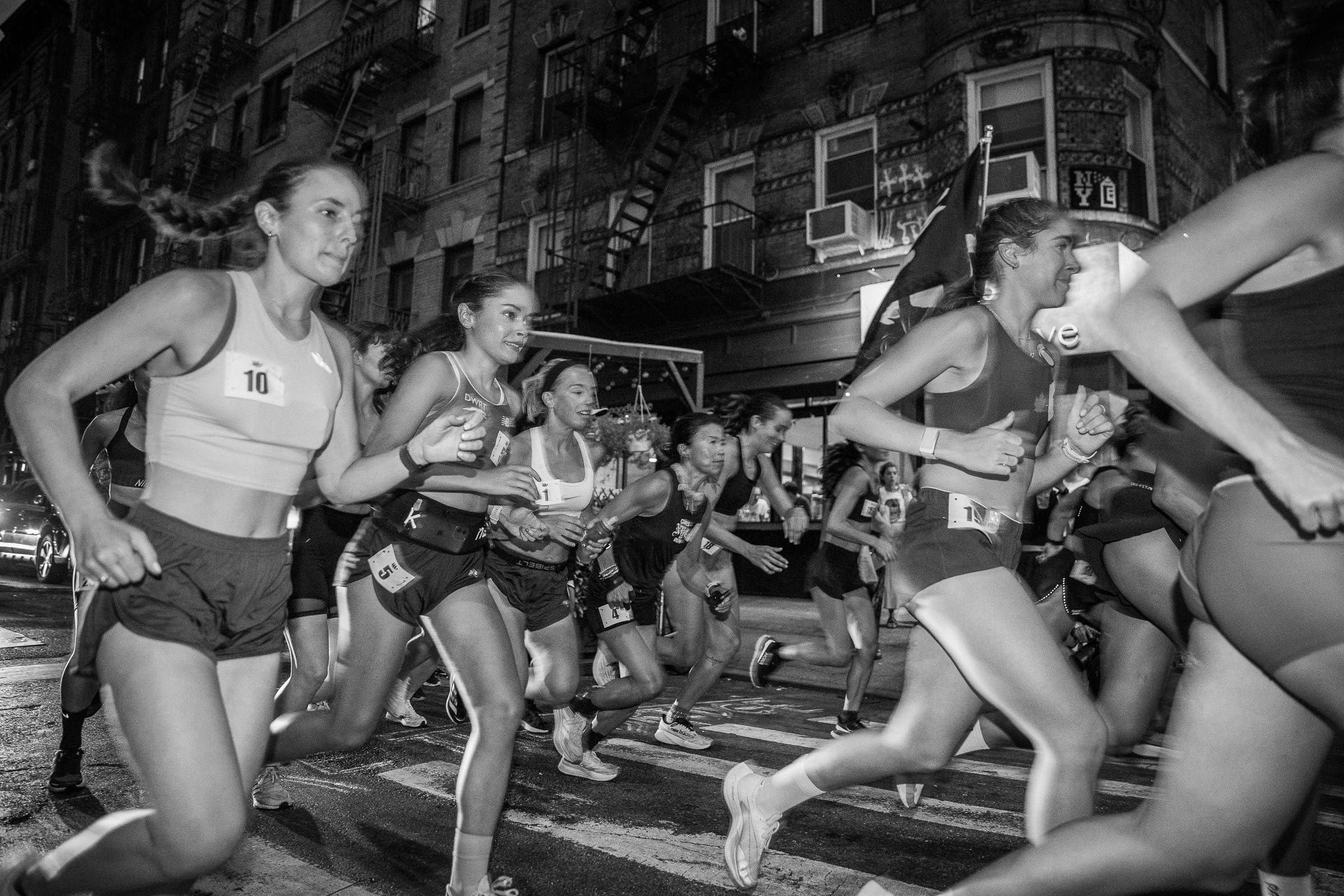
'I went and said, "Hey, I’m gonna throw a race and there’s gonna be a hundred of us running over this bridge at 11 PM tomorrow—is that okay? What are you guys gonna do?" And the cop was like, "What the fuck am I supposed to do?"...'
Right, right.
With all that in mind, I was a runner living in Brooklyn, and I was always running over the bridges; they were my favourite runs. So, I was like, ‘Well, why don’t we do an out-and-back race over the bridges?’ And that felt new and interesting, and it would be at night; and at the time, we weren’t running in the streets at all, and so it also mitigated any kind of risk. So, we did a summer series that first year, where it was one race every month of the summer and a different bridge every race. And the idea for the first race was that it was just going to be my friends, like, nobody was gonna know about it. And then the next month, maybe more people would be there, and then by the last one hopefully it would be gaining momentum, y’know?
But it blew up, right?
Right! Basically, the first race was me begging my friends to please come and run, but then by the last race—which I think was on the Manhattan Bridge—we had the biggest turn out. And from there, I thought, ‘Okay, we have something.’ At the time, I was also run pacing with Nike, and this was when NRC was just getting started in New York. And then the following year, I was no longer the president of the Harriers, and just said to them, ‘I would like to continue doing these races,’ and they didn’t really want to be a part of it anymore, so I asked if they’d mind if took them, and they said, ‘Yeah, go right ahead.’
Why didn’t they want to keep the races if they were so successful?
Well, if you think about it, it’s like a square peg in a round hole. They were very regimented and risk-averse, and really just wanted to continue doing the 5Ks and the 10Ks in the park. Which is totally fine, but what I wanted to do wasn’t a fit with their crowd, I guess.
How many people run Take The Bridge races?
The most we’ve done 130 people, but I try to keep them limited to 100 people if possible.
And how does that work legally? Are you allowed to do it?
[Laughs] No, you’re not allowed to do it. But when I left the Harriers and took over the races, I started doing more running on the streets and crossing the bridges, and now most of what we do is running on the streets, and then we take bridges along the way, especially as we’ve grown and taken it all over the world. But when we’re planning these races, the major things we think about are where are we going to start and finish? What are the check points? What are the areas where we’ll be congregating? And we make sure that they’re areas that are off the beaten path and where no one cares if there’s big groups of people gathering. But technically, if you’re more than twenty people, you’re supposed to get a permit, but I don’t ever get a permit.
What do the cops say?
They don’t care. Like, there’s a ton of cops on the Brooklyn Bridge, and I went and said, ‘Hey, I’m gonna throw a race and there’s gonna be a hundred of us running over this bridge at 11 PM tomorrow—is that okay? What are you guys gonna do?’ And the cop was like, ‘What the fuck am I supposed to do? Just make sure you leave some room for people to walk across the bridge.’
[laughter]
That’s great.
But, you know, the moment someone does something unsafe and somebody gets hurt is the moment these races are over. So, it’s very important for me that everybody crosses the finish line safe. It’d be really irresponsible to be doing these races and not considering everybody’s safety; so, when I put together a course, I try to find roads that are more industrial and don’t have so much traffic, and on any of the major roads where our runners are crossing, we have people standing by, making sure it’s safe and nothing happens. I also have a lot of bike marshals on the course. Like, there’s no reason to be running in traffic and dodging cars and almost getting hit, y’know? So, I really drive it home to everyone to please be safe and don’t take risks.
How old is TTB?
We’ve been doing Take The Bridge for eight years, starting in 2016. In 2018, we did our first race outside of New York, which was in Boston for the Boston Marathon. We did Chicago that same year. During that time, Nike was sponsoring us, and they asked us to do races in those two cities. Boston was easy to organize because you can just drive there, and there were lots of people from New York living there, but Chicago was the first race where we had to figure how we were going to do it in a city that isn’t that close to New York.
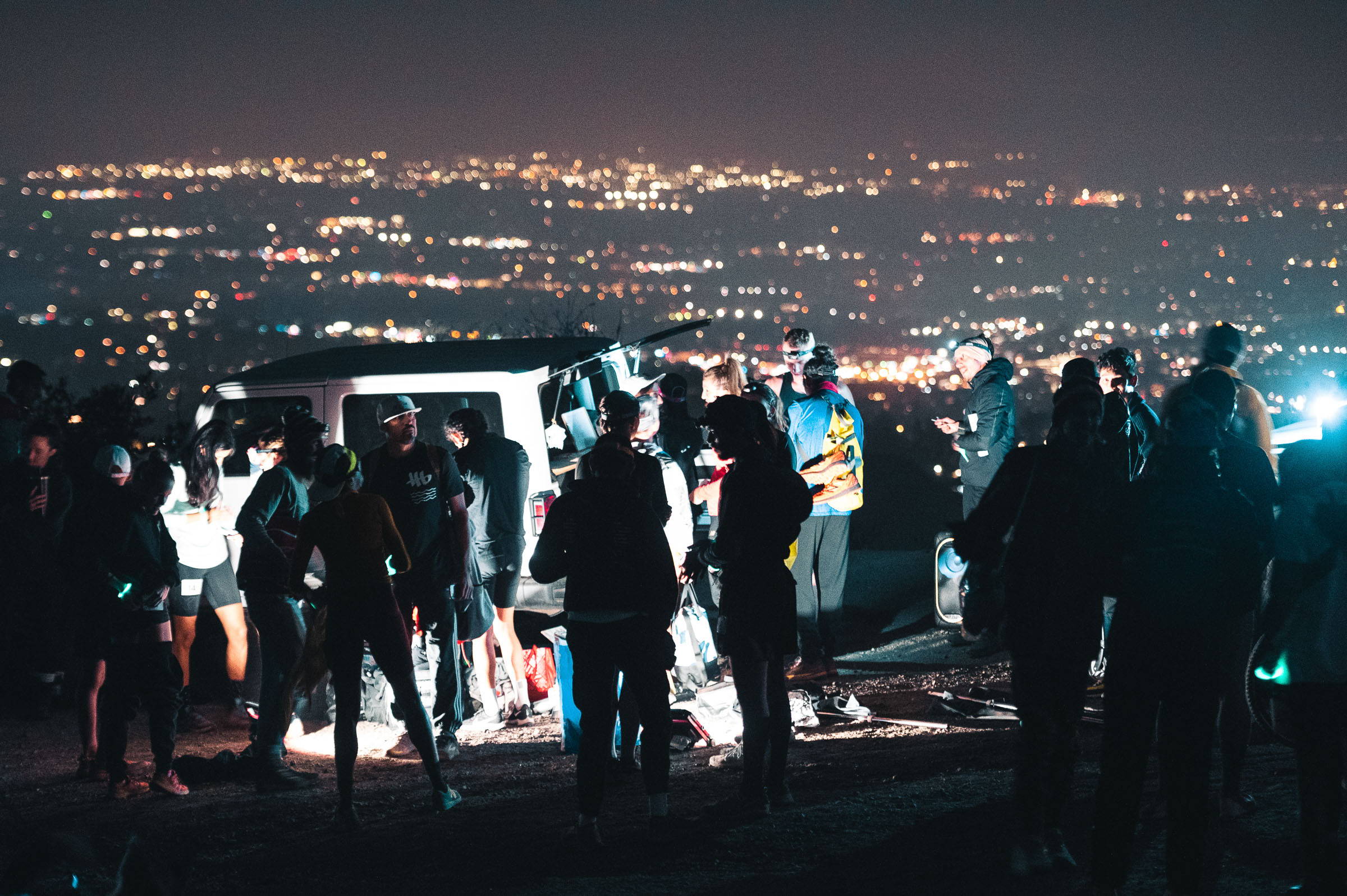
'...the moment someone does something unsafe and somebody gets hurt is the moment these races are over. So, it’s very important for me that everybody crosses the finish line safe.'
Right.
So, those were the first two we did outside of New York, and then in 2019 I partnered with Lululemon and we took it all over the US, into Canada, and also to London.
That’s really incredible to go from hassling your friends to come and run your race to going international with it. Very cool. Roughly how many cities?
Well, that year, in 2019 I think we did around ten cities. But all up, I’d have to put a list together for you...
So, it’s a lot.
Yeah, mostly in the US.
And you’re branching out into trail races now, right?
Yeah! So, two years ago I moved to LA, and I feel like, honestly, the energy that’s on the streets in New York is on the trails here in LA. It’s a really different venture for me, and I love running trails—
Same. It’s so fun.
It is so fun. Anyway, someone said to me, ‘Can we just do this on the trails?’ I thought, well, why not? And so, the first one we did was in LA, and that was in 2021, and since then we’ve done them all over the place.
Where?
We’ve done trail races in Boulder, and Tahoe... and then Montreal.
Amazing.
But that first one we did in LA was in the Santa Monica Mountains, and there’s this place called the Nike Watchtower [unrelated to the shoe company] and it’s like a former missile tower from the Cold War era; and it’s at the top of a network of trails right off of Mulholland.
Sick.
We started at the base of the tower, and there were number of check points on Mulholland, and on Sullivan Canyon, and you had to finish by climbing to the top of the tower and we had a party up there at the end.
That sounds awesome.
Yeah, and what was really great was I was biking in the first-place finisher and you could see everyone at the top of the tower about a mile away, and you can see all this energy up there, and then once we get up to the top of the tower you could see all of the little headlamps bobbing around on the trails—
It was at night!
Yeah, it was in the evening, and we’re at the top of the tower waiting for everyone to finish, and it just felt like there’s this energy happening in two different places, and they’re feeding one another.
'...two years ago I moved to LA, and I feel like, honestly, the energy that’s on the streets in New York is on the trails here in LA.'
One thing that really surprises me about you, Darcy Budworth, is you have a day job, right?
Yeah, I’m an interior designer. I work for a company.
So, how the hell are you doing all this?
[Laughs] Well, it’s like I have this job during the daytime, and then I have my other job during the nighttime.
Take The Bridge.
Take The Bridge.
That’s amazing. Can you have a pet with this lifestyle? I suppose you can’t.
I have a dog!
Who are you?! Okay, last question: what’s coming up in 2024 for Take The Bridge?
Well, we had a lot of things happening in 2023; I was throwing races like crazy. The last twelve to fifteen months I’ve had a race every single month. So, I’m going to try—and I’m going to hold myself accountable to this—I’m going to try to take the next three months off.
Good for you.
But during those three months I’m going to think about ways to do bigger, more impactful races, but less of them.
Where will these races be?
I’m not sure, but I’d like to do something abroad; maybe Paris or Copenhagen or Berlin...
Watch this space?
Definitely.

In This Issue

Get Possessed
This Is Hardcore: Deleting Miles with Daniel Fang
READ
The Knowledge
Running Your First Run
READ
Phone it in
Matt Lenehan
READ
Smoke Signals
This Month's Hot Mail
READ
Welcome to Earth
What is Bonking?
READ
The Bullshit Report
Pre and Post-Run Stretching
READ
High Rotation
Playlists for the People
READ
Highway to Health
Groin Groans
READ
Your Running Stars
Getting Serious About 2024
READ
Eat it
A Guide to Post Race Nutrition
READ
Notes from the Underground
